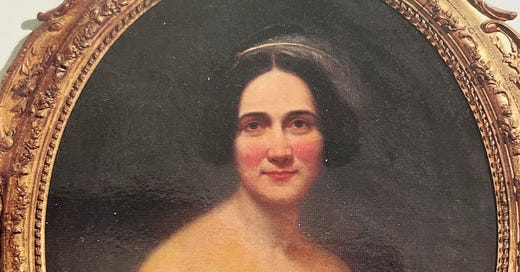Every happy, calm, occasion these days feels to me like a foreboding Before in a Before-and-After tableau, except no one can say what After is going to look like.
I’m 71, so who knows how much After I’m going to see. Heck, who even knows if anyone will care about these musings of an old-ish woman? I’m taking my inspiration for this everywoman’s journal from Mary Chestnut, an abolitionist and feminist on the Southern side in the American Civil War. She first popped up – to me anyway – as a diarist in the Civil War documentary series on PBS in the early 1990s. Julie Harris voiced quotations from her diaries. Chestnut was one of those witnesses to history who by coincidence or luck just happened to be where the action was. John Reed was another: he wrote Ten Days That Shook The World about the Russian revolution in 1917. So was Anne Frank, whose ordinary privileged life was upended when her family went into hiding in Amsterdam.
I’ve got an ordinary privileged life too: a smallish house in a neighborhood that used to be all small houses but is now in the midst of mansionizing. It’s a five-minute drive for groceries, 10 minutes to the non-essentials of downtown Bethesda, a seemingly recession-proof Beverly Hill East. Seriously, during the so-called Great Recession of 2008, the sidewalks of Bethesda were crowded with well-heeled folks carrying full shopping bags from the tony stores that line the main drag. When we moved here in 1989, that main drag included Maloney Concrete, a shabby but well-stocked used bookstore and a few consignment shops. One of the few constants from those days that’s still a mainstay is Strosnider’s Hardware, where you can get rodent spray when mice invade your car engine (happened to me this year), a specific type of bolt or screw and also a Yeti cooler that costs hundreds of dollars. That store has changed with the times and I guess we have too.
It’s no accident that a woman’s observations of the Civil War provide a frame for my account of 2025, which feels very much like an undeclared but palpable war among Americans. I know I’m not the only one whose family and friends have been divided between those who support the current administration and those who don’t. The truly frightening aspect of the moment is the attempts to destroy history by destroying documents, hiding them or simply making it hard for everyday people to remember what a functioning government looks like. This week’s example of the trend is the Pentagon’s decision to remove images and accounts of so-called DEI -- diversity, equity and inclusion -- in the U.S. military, and to remove DEI policies too. It’s as if they want to turn the clock back to a time when only rich white men had power. The speed with which this change has occurred is mind-blowing and terrifying.
The key, I think, is to write down what’s happening as it happens. I’m starting to feel as if anyone who can put a pen to paper or use a keyboard or any kind of recording device should do so now. It’s one of the few protections we have against the collective forgetting the current American leadership has in mind. I’m going to let Mary Chestnut lead me on my path, with her tart and tragic observations that were never fully published in her own time. You may not need this kind of historic guide; I find she’s helpful to me.
The picture above is from the cover of Mary Chestnut’s Civil War, edited by C. Vann Woodward and winner of the 1982 Pulitzer Prize in history. I’m reading my way through it as I put down my own thoughts. It weighs enough to make a dent in my stomach when I read it in bed, and it’s loaded with footnotes on every page. Mary’s at the beginning of her war, not long after the first battle of Bull Run, just as I’m at the beginning of mine.





Welcome to the wacky world of Substack!